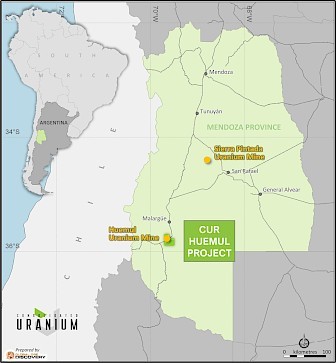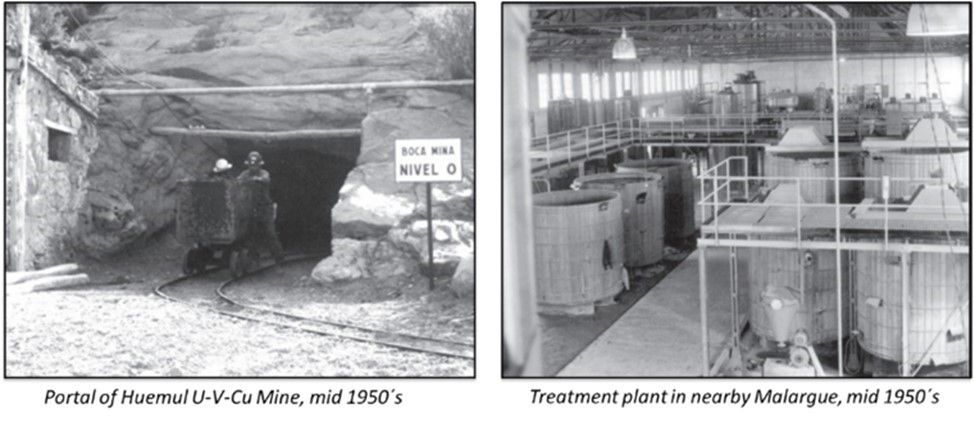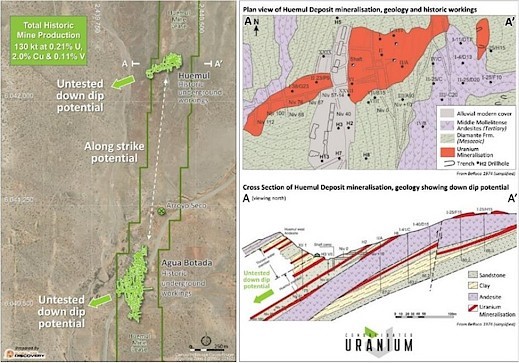Overview
Location
Mendoza, Argentina
Ownership
100% IsoEnergy
Deposit Type
Sandstone Hosted
Primary Minerals
Uranium, Vanadium and Copper
Stage
Past-producing
Highlights
- Early-stage exploration project located in the southern part of Mendoza Province, Argentina
- Huemul consists of 27,220 hectares of exploration claims centred around CNEA´s (Comisión Nacional de Energía Atómica) historic Huemul-Agua Botada mine, Argentina´s first producing Uranium mine
- The Argentinian government discovered the Huemul-Agua Botada Zone in 1952 and exploited the deposit between 1955 and 1975
- Historically, ore was treated in a concentration plant at the nearby town of Malargüe.
Location of the Huemul Project
Geology
Uranium-Vanadium-Copper mineralization at Huemul comprises a number of stacked, metres-thick stratabound lenses hosted by an approximately 50-metre-thick packet of conglomerates and arenites, sandwiched by redbeds and intruded by andesite sills. These sedimentary rocks are part of the fill sequence of the Cretaceous Neuquén Basin. Host rocks to the mineralization are highly bituminous and mineralized zones are likely to have been failed petroleum-gas traps.
Approximately 130,000 tonnes were historically mined from the Huemul Mine averaging 0.21% U3O8, 2.0% Cu and 0.11% V2O5, while the production from the adjacent Agua Botada deposit averaged approximately 0.13% U3O8, and 0.10% Cu.1 The hypogene ore-related minerals at Huemul-Agua Botada include pitchblende, pyrite, marcasite, chalcopirite, bornite, sphalerite and galena, and in the overlying supergene zone uranophane, carnotite, torbenite, malachite, azurite, neoticite and roscolite.
Exploration Potential
In 2005, Energy Minerals (local subsidiary of Calypso Uranium Corp.) conducted radiometric surveys, ground truthing and geochemical sampling over the Huemul district around the historic Huemul-Agua Botada mines; however, no drilling was ever conducted.
CUR´s more recent analysis suggests that these prospects all have both strong geochemical and radiometric similarities with Huemul, plus the size potential to warrant immediate follow up.
The historic results gathered by Calypso Uranium and company field verification indicate that the Huemul Project has potential to host extensive, and as yet undiscovered, zones of shallow conglomerate-hosted Uranium, Vanadium and Copper mineralization of a similar style to that historically exploited at the Huemul-Aguas Botadas mine.
Notes
1. Guillermo Rojas, 1999. Distrito Uranìfero Pampa Amarilla, Mendoza. En Recursos Minerales de la Republica Argentina. Pag.1135-1140
Photos showing the historic Huemul mine and nearby processing plant
Geological map and section through the historic Huemul mine operation




